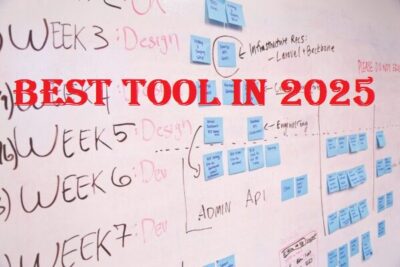Introduction
Imagine a workplace where people share ideas fearlessly and leaders listen without judgment. Trust at Work creates such an environment. It fuels collaboration, sparks innovation, and elevates motivation. In this article, you will discover what Trust at Work truly means, how to build it step by step, and when to apply it. You will also explore three detailed real-world examples and learn how trust directly enhances productivity. Ready to transform your team? Let’s dive in.
Table of contents
1. What Is Trust at Work?
Trust at Work exists when employees believe that leaders and peers act with integrity, fairness, and respect. They feel safe to voice concerns and confident that others have their back. When trust flourishes, individuals willingly share knowledge and take initiative.
- Key Elements
- Reliability: Delivering on commitments consistently.
- Competence: Having the skills needed for the task.
- Honesty: Communicating openly and transparently.
- Respect: Valuing each person’s contributions.
- Empathy: Understanding colleagues’ challenges.
By combining these elements, teams build a foundation that encourages experimentation and continuous improvement, leading to stronger outcomes.
2. How to Build Trust at Work
Building Trust at Work involves three pillars: communication, consistency, and empathy. Follow these practical steps to foster each pillar.
2.1 Open Communication
- Speak Clearly: Define goals, challenges, and expectations without jargon.
- Listen Actively: Maintain eye contact (virtually or in person), ask clarifying questions, and summarize what you heard.
- Give Feedback: Balance constructive suggestions with genuine praise.
- Hold Check‑Ins: Schedule brief weekly one‑on‑one meetings to stay aligned.
Transitioning to transparent dialogue prevents misinformation and strengthens team alignment.
2.2 Consistency in Actions
- Set Expectations: Clearly outline tasks, deadlines, and responsibilities.
- Follow Through: If you promise resources or support, deliver on time.
- Model Behavior: Leaders should arrive punctually, admit mistakes, and treat everyone equally.
- Enforce Fairness: Apply policies uniformly, regardless of role.
Consistency builds credibility. When leaders act predictably, teams feel secure and motivated.
2.3 Empathy and Support
- Acknowledge Challenges: Check on workloads and personal well‑being.
- Offer Help: Provide tools, training, or a listening ear when needed.
- Celebrate Wins: Recognize both big milestones and small achievements.
- Encourage Growth: Suggest courses, workshops, or mentorship opportunities.
Showing genuine care for individuals reinforces loyalty and willingness to go the extra mile.
3. When to Apply Trust at Work
Timing trust‑building efforts can amplify their impact. Consider these key moments:
- Onboarding New Hires
- Introduce mentors and clarify values from day one.
- Kick‑off for Major Projects
- Define roles, decision rights, and communication channels upfront.
- During Crises
- Share updates honestly, admit setbacks, and involve teams in solutions.
- Team Expansion
- Facilitate early cross‑functional collaboration and social interactions.
Applying trust strategies at pivotal stages cements positive dynamics and averts misunderstandings later.
4. Real‑Life Examples of Trust at Work
Explore three in‑depth case studies to see trust‑building in action.
4.1 Retail Team Transformation
In 2019, a regional retail chain saw turnover spike and sales drop by 15% within six months. Management launched a trust initiative:
- Transparency: Monthly town halls shared targets and challenges openly.
- Empowerment: Store managers gained authority to optimize staffing and orders locally.
- Peer Recognition: A “Helpfulness Award” honored standout employees.
Results after six months:
- Turnover fell by 50%.
- Same‑store sales climbed 12% year‑over‑year.
- Employee satisfaction rose from 65% to 87%.
4.2 Remote Tech Startup Success
Early 2021, a 20‑person software startup moved fully remote and productivity slid 20%. They implemented:
- Virtual Office Hours: Leaders held daily open chat sessions for questions.
- Transparent Code Reviews: Public feedback framed with strengths first.
- “One Good Thing” Segment: Weekly meetings began with personal wins.
After three months:
- Project completion improved by 30%.
- Engagement jumped from 60% to 85%.
- Retention reached 95%.
4.3 Healthcare Unit Improvement
In 2022, a pediatrics unit faced miscommunications, and patient satisfaction dipped to 72%. They introduced:
- Standardized Handover Checklists: Ensured critical details passed between shifts.
- Interdisciplinary Rounds: Weekly meetings included doctors, nurses, and social workers.
- Anonymous Feedback: Staff shared concerns safely, leading to monthly action plans.
By mid‑2023:
- Patient satisfaction rose to 88%.
- Medication errors dropped by 40%.
- Staff turnover decreased by 30%.
5. How Trust at Work Enhances Productivity
Trust accelerates performance through clearer communication and heightened motivation. Key benefits include:
| Metric | Without Trust | With Trust |
|---|---|---|
| Employee Engagement Score | 55% | 85% |
| Project Completion Time (days) | 30 | 21 |
| Turnover Rate | 20% | 10% |
| Reported Errors per 1000 Tasks | 15 | 9 |
- Faster Decisions: Teams skip bureaucratic hurdles.
- Higher Engagement: Employees feel valued and invested.
- Reduced Absenteeism: Trust lowers stress and burnout.
- Increased Innovation: People take calculated risks when they feel safe.
6. Common Myths About Trust at Work
6.1 Myth: Trust Equals Leniency
Reality: Holding people accountable shows you care. Set high standards and follow up.
6.2 Myth: Trust Builds Overnight
Reality: Trust grows through consistent, repeated behaviors over time.
6.3 Myth: Trust Eliminates Conflict
Reality: Conflicts still occur, but teams resolve them respectfully and constructively.
6.4 Myth: Only Leaders Create Trust
Reality: Every team member influences trust by meeting deadlines and communicating openly.
7. Conclusion
You now have a clear roadmap for Trust at Work: its definition, practical steps, optimal moments to apply it, and real‑world examples. Trust pays dividends in engagement, speed, and innovation. So, what’s your first step? Perhaps schedule a one‑on‑one check‑in, share a transparent update, or recognize a colleague’s effort. Begin today—your team’s productivity depends on the trust you build.
references
Warning: The provided links lead only to the specified content. Other areas of those sites may contain material that conflicts with some beliefs or ethics. Please view only the intended page.
- Harvard Business Review, 2017, Paul J. Zak — Explores neuroscience behind trust in workplaces.
https://hbr.org/2017/01/the-neuroscience-of-trust - Gallup, 2020 — Research on employee engagement and trust impact.
https://www.gallup.com/workplace/236927/employee-engagement-drives-growth.aspx - Forbes, 2021 — How trust drives productivity in remote teams.
https://www.forbes.com/sites/forbeshumanresourcescouncil/2021/04/14/how-to-build-trust-in-remote-teams/ - Journal of Organizational Behavior, 2019, Dirks & Ferrin — Study on trust’s role in team performance.
https://onlinelibrary.wiley.com/doi/full/10.1002/job.2386 - McKinsey & Company, 2022 — Insights on trust and leadership impact on corporate success.
https://www.mckinsey.com/business-functions/organization/our-insights/the-organization-blog/trust-and-leadership-in-business


















